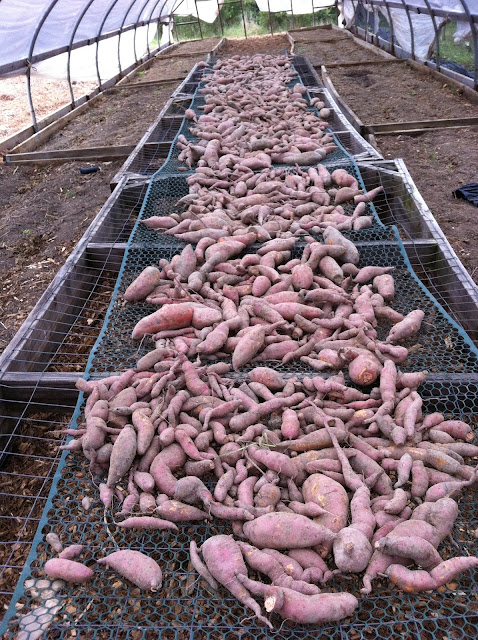The CSA program started back in the winter of 2011. I had been at the farm for a few months and was looking for a way to bring in some income in the winter months when markets and restaurant sales slow down. Seth was still finishing school at UGA, but we consulted back and forth and agreed to do a three month winter CSA program. I made flyers to pass out at the farmer's market and after several weeks of campaigning for the program, we had four families (one of which was my parents) who were crazy enough to trust that they would be guaranteed produce every week during the hardest time of year to grow vegetables. Looking back I have no idea what we were thinking starting our first ever CSA in winter, but somehow (mostly thanks to a very mild and warm winter) we pulled it off and thus our CSA program was born.
We went from four to 100 plus members in less than a year and still marvel at the interest and growth in the program. We've had members be with us for going on three years and even one family who's been with the farm longer than Seth and I have. We know a CSA is not for everyone, but hope that if a member finds out that the program isn't ideal for their lifestyle, that they can at least enjoy it for the time they are a part of it. The recipes and newsletter are our attempt to make the program and vegetables be more manageable and familiar- hopefully sparking inspiration for new recipes and family dinners.
As the CSA program breaks for the winter (we will not be doing a winter CSA program this year, but will be at the Grayson Farmer's Market on Wednesdays from 3:30-7:30 pm), we will be brainstorming ideas for next year's program. When the details are set in stone, we will send out the 2014 program information and application.
Thank you to you all for your support of the farm this 2013 season. Check back to the blog throughout the winter for updates and we will hopefully see you all in 2014!
Here are some flash back pictures to the "early years":
One thing we learned quickly: paper bags for the CSA were a terrible idea. They ripped from water and weight so easily.
This was the content of one of our winter bags in 2011. We had tomatoes in a high tunnel and thanks to the warm weather, the plants survived until December. The tomatoes were not that tasty though- cold makes them mealy (that's why you don't refrigerate tomatoes). We decided after that year to keep tomatoes growing to the hot summer months.
That's me with our old produce scale. We've upgraded to a table-top digital scale since then that is MUCH easier to deal with. And the garage has been closed off and is climate controlled now. No more freezing in winter and burning up in the summer.
We planted this lettuce on New Year's Eve 2011. We were sweating in the high tunnel it was so warm outside.


























.JPG)


































